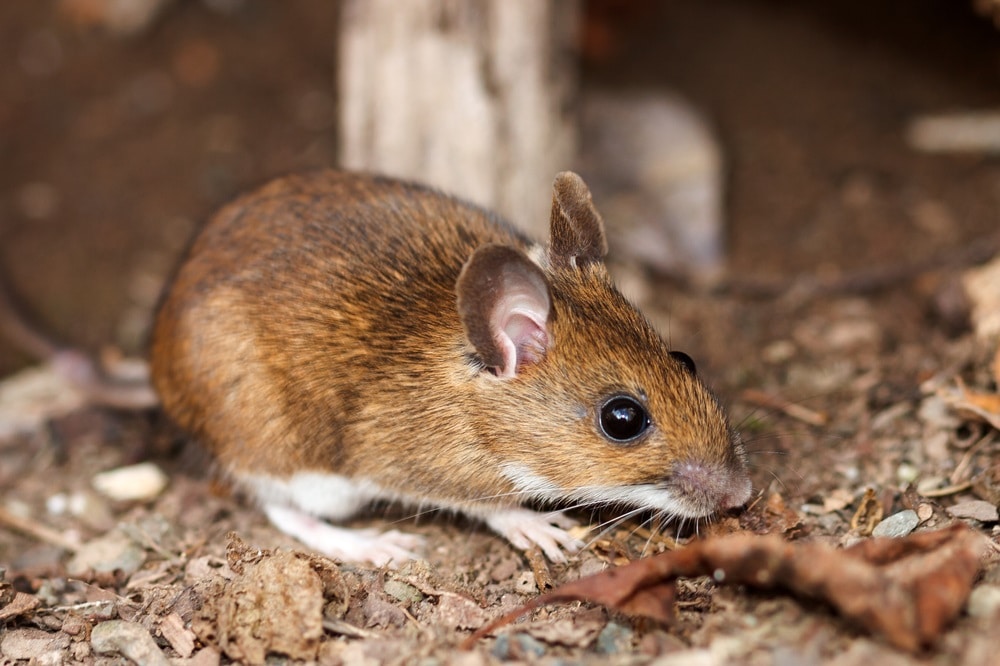
Rodents are often an inevitability for Oklahomans that do not take the time to protect their home from the arrival of these pests during the colder months. And, as mice or rats begin to create nesting sites inside of your attic, garage or walls, they can often be hard to remove without the assistance of a pest control professional. That is where the friendly and helpful team of rodent control experts at Emtec Pest Control can help!
Although mice, rats and other rodents may look cute, they are often one of the last pests that you would want to find in your home or business because they tend to carry a variety of diseases and cause extensive damages with their nesting habits. Unfortunately, the fall months often make these structures across the state of Oklahoma incredibly attractive to a variety of rodents because of the warmth, access to food and plentiful water supply they provide during the colder months. Even worse, a small population of mice can quickly become a much larger population due to their prolific and expedient breeding habits.
Mid-November will often bring many changes across the state including earlier sunsets, barren trees, and the disappearance of many common summer pests. As temperatures begin to dip, many different species of rodents from field mice to the Norway rat will begin searching for ways to gain access indoors and start building their nests and obtaining new food sources to survive the upcoming winter. During this time, finding entry points and sealing them off before they can be utilized is critical for ensuring your home does not become infested with these often unwelcomed new visitors and the common problems that accompany them.
As a leading rodent exterminator in Tulsa and OKC, Emtec Pest Control has helped countless businesses and homes across Oklahoma deal with their existing rodent problem while also working to ensure that they do not return. Our team knows how important it is to keep your family safe from rodent-borne diseases and the best news is that infestations are preventable with vigilant rodent control efforts in place. All it takes is one phone call to schedule your free inspection and we will arrange to have one of our skilled pest control technicians to visit your home to create and implement an effective plan to eliminate any mice or rats that may be present.
Rodent Identification
One of the best ways to stay protected from rodents is to be able to easily identify them.
If you have seen something that looks like a rodent inside of your home or business, it can be such a jarring experience that you may not be entirely sure what you had seen. Unfortunately, there are a wide variety of mice and rats that can enter structures in Oklahoma. Even more disturbing, the type of species you find may be more likely to carry rodent-borne diseases that could impact the health of your family or anyone that encounters them or their waste.

Deer Mouse
Although most often found in wooded areas, deer mice will venture inside of sheds, outbuildings or homes that are located near them. In many cases, deer mice can cause extensive damages to wooden structures and carry several potential health concerns, particularly their increased risk of carrying hantavirus. During the colder months, deer mice are more likely to seek shelter indoors and will often enter structures where they may seek shelter at higher levels like attics or upper floors.
Only living around 14 months under optimal conditions, deer mice females can have three to five live young in just 24 days. Often these young deer mice will reach sexual maturity in as little as 8 weeks. To further compound this, each female will have two to four litters each year; making it incredibly important to eliminate deer mouse populations before their numbers become too large and population control becomes much harder.
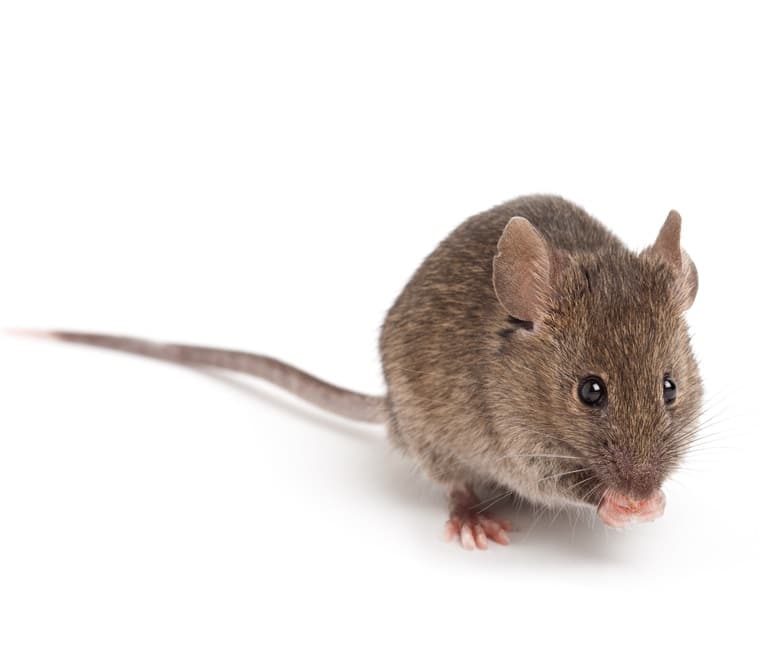
House Mouse
Unlike other species of rodents that make their way indoors to escape changing weather or decreased temperatures, house mice are often active year-round. Unfortunately, this means that they could find their way into your home or business at any time of the year. Because they are most known for their infestation in homes, they can commonly be found feasting on pantry foods and prefer items like cereal. Often, house mice can survive on around 0.1 oz. of food daily with no additional water; however, they will seek out around 0.1 fluid oz. daily if their diet consists of primarily dry foods.
Perhaps one of the most shocking statistics when studying house mice is their ability to have litters of up to 16 individual pups in as little as three weeks. To further compound the severity of this, each reproductive house mouse will have seven to eight litters annually. As you might imagine, this poses a large problem for homeowners if they let their infestation remain unchecked and soon large populations of this mouse species will begin to overcrowd the structure they have decided to nest inside of.

White-footed Mouse
Like deer mice, white-footed mice tend to infest homes that are near wooded areas or bordering agricultural land. Due to their adaptable nature, white-footed mice can be found in suburban areas although it is not as common. Most white-footed mice will live up to one year under optimal conditions in the wild and each year there will be nearly a complete replacement of the existing population. In most cases, mortality rates will spike in the sing and early summer due to increased predation, although this may not affect white-footed mice that have created nests indoors.
As an omnivorous species of mouse, white-footed mice tend to prefer seeds, berries, insects, fruits and fungi that may be available to them. Since they do not hibernate during the winter, they will often store nuts and seeds like squirrels to sustain themselves during the winter. Like other mouse species, white-footed mice are prolific breeders and can have two to nine live young up to four times annually. While white-footed mice may not be a common home pest, their presence in rural areas and outbuildings may make rodent control necessary to eliminate large populations.

Norway Rat
Rats often distinguish themselves against mice because of the sheer size differences that exist between the two. As a larger species of rat, the Norway rat can reach up to 1 lb. in weight and span lengths of up to 40 cm. Since Norway rats are accomplished diggers, they are often attracted to homes that have thick shrubs, unmaintained grass or gardens. Once near a home, they will often find gaps or crevices that lead indoors that are as small as ½”. Unfortunately, once indoors, Norway rats can cause extensive damages or transfer a variety of diseases to humans through their urine or feces.
Like other rodents, Norway rats can quickly increase their population and can breed at any time throughout the year. Females will commonly have three to twelve litters each year and may produce between four and twenty-two pups with each litter. Norway rats can often reach sexual maturity within 5 months, making it easy for a small population to quickly become a much larger problem that requires that assistance of a rodent control professional.
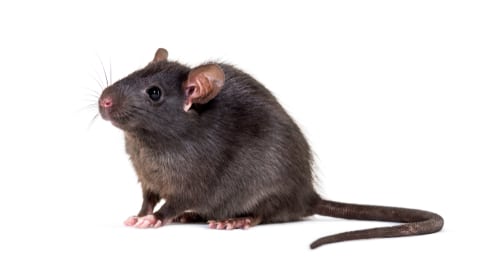
Black Rat
The black rat goes by many names, such as ship rat, roof rat, and house rat. They are black or dark grey with a lighter belly. They were brought to North America on cargo ships from India. They reproduce rapidly, which has caused them to become widespread and made them considered a naturalized species. They are slightly smaller than the Norway rat (or Brown rat) at 8 inches long, not including the tail. They also reproduce less often, making them less common than the Norway rat.
Like many other rodents, they can carry pathogens and spread diseases such as toxoplasmosis, typhus, and bubonic plague. Though they may not appear sick, they can still carry the infections. These rats like to live in Urban areas on roofs, walls, and trees. Since they like to live around populated areas, they pose a severe threat to the health of humans. If you have any issues or infestations, they must be dealt with swiftly and carefully. They are also a nuisance to crop fields. The Black rat reproduces from March to November with 1 to 16 pups in a litter.
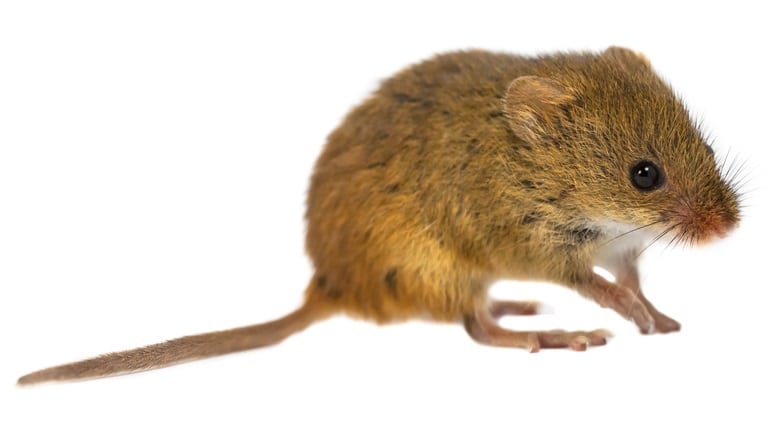
Eastern Woodrat
The Eastern Woodrat has brown-gray fur with black tips. Their bellies and feet are white and can grow to 8.4 inches long, not including their tail. These rodents like to live in swampy terrain or forested areas. They build their nests in the base of trees and under or between boulders. They are scavengers and will use just about anything they find to build their nests, including glass shards, tin cans, and dung.
The Eastern woodrat feeds off the land by eating plant stems, roots, nuts, seeds, and whatever else they find. They are highly territorial and will defend their home from any intruder. They only become social during their breeding season. Females will reproduce 1-3 times per year and have a litter of about 2-3 young.
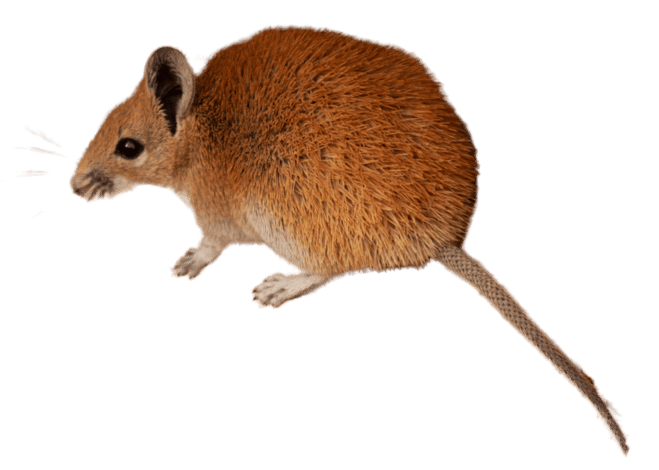
Golden Mouse
The Golden mouse will have a golden brown to burnt orange color. They grow to about 4 inches, not including the tail, and have soft fur. They are picky with their diet and prefer to eat seeds solely. They like to live in thick swamplands and tall vegetation and anywhere else with many red cedar and honeysuckle trees.
The Golden mouse uses its tail as an extra appendage. They will use it to balance on two legs and aid them in climbing. They have short gestation periods, meaning they can produce many litters in a year, each litter averaging 1 to 4 pups. They are social and usually share their nest with their kin. These mice are nocturnal hunters.

Cotton Mouse
The Cotton mouse is a medium to large mouse with cinnamon fur covering its 3.9-inch body, which is slightly darker along its back. These mice like to live in swampy areas, rocky bluffs, and fields. They prefer to eat seeds and insects, but they’re considered omnivorous. The Cotton mouse was given its name from their use of raw cotton to build its nests. They are survivors as they can survive predators and wildfires well. They spend a lot of time underground, protecting themselves from many threats.
The Cotton mouse will likely breed throughout the year. They produce about three pups per litter, and these pups will reach sexual maturity about two months after birth.

Pinyon Mouse
The Pinyon mouse is most notably distinguished from its fellow mice by the size of its ears. They are huge! Although these mice like rocky slopes the best, they can and will be found in many other areas, such as grasslands, forests, and even deserts. Due to their adaptability to different climates, the Pinyon mouse will alter its food intake based on how much water is available in the area.
The Pinyon mouse will breed from mid-March to mid-November. They usually peak in April. They will give birth to about 3-6 pups per litter. Their gestation period is about 26-40 days. So they could have as many as three litters in one year.
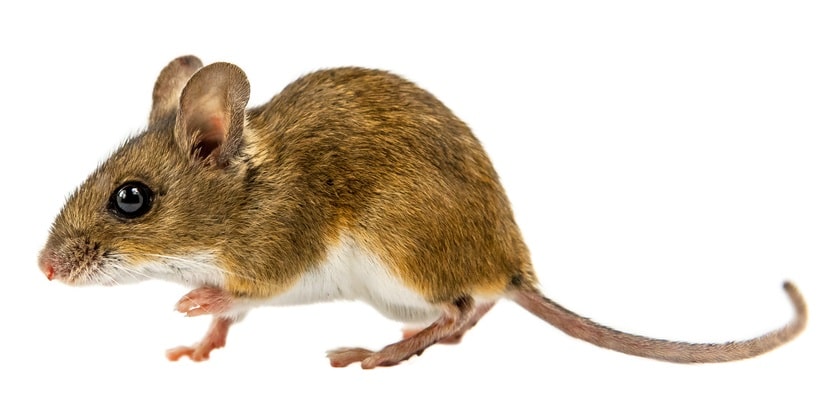
Fulvous Harvest Mouse
The Fulvous Harvest mouse will grow to about 6.5 inches in length with a longer tail than other harvest mice. They have a yellowish-brown color with white bellies. You can find the Fulvous Harvest mouse in open, grassy areas with plenty of pine and mesquite trees. They will build their nest a few inches off the ground with tangled grass.
One unique thing about this mouse is that the mating pair will live together in the same nest, even if they are not raising their young. They like to eat seeds when they can’t find insects and invertebrates in the winter months. You can find them in low shrubs when they are not at home. They breed from late spring to early fall. They will give birth to about three pups in each litter.

Eastern Harvest Mouse
This Eastern Harvest mouse is dark brown with a lighter underside and feet. They can grow to about 8 inches in length, including their tail. They are vastly widespread in grassy fields and meadows. They will live in the nest they build for the duration of their lives. These mice have very short lifespans, with most living less than a year in the wild.
These mice will breed year-round but will peak in the spring and fall months. They have short gestation periods and average 3-4 young per litter.

Western Harvest Mouse
The Western Harvest mouse has a brownish back with buff-colored sides and a white belly. They grow to about 6 ½ inches in length with a slim body. They are strictly herbivores, only eating insects if their preferred food source is scarce. They are nocturnal, so you probably will not see many.
The female can become pregnant as early as four months old. This, paired with their short gestation period, means they have a high reproduction rate. They will give birth to about four pups per litter.
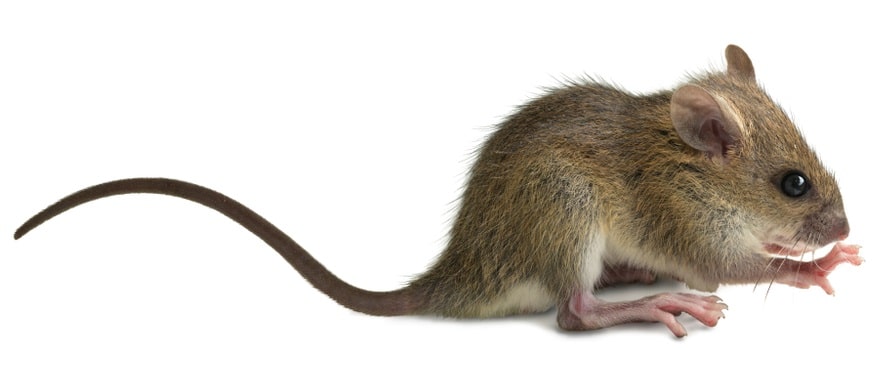
Plains Harvest Mouse
The Plains Harvest mouse is brownish with a slightly darker color along its back. Their undersides are whitish, and the species can grow to about 5 ½ inches. They are widespread in grass fields and grazed plains. They have a relatively low species count making them hard to find in the wild. They like to forage for seeds and insects during the night.
They have short gestation periods meaning they can produce multiple litters in a year. They will give birth to about 3 – 7 pups in any litter.

Northern Grasshopper Mouse
This Northern Grasshopper mouse is the most interesting of them all. They are about 7 ½ inches in length with grayish or pink-cinnamon fur. They have white bellies and feet. These mice will be found in caves and usually have three different types. The first burrow is for sleeping, and the second is for storing excess food. The third burrow is used as a panic room to escape predators. This burrow I deep in the ground, angled at a 45-degree angle.
These little guys are some of the only carnivorous mice. They feed on insects, smaller mice, and even small snakes. They can breed year-round with a litter of up to 6 pups.

Eastern Gray Squirrel
At about 21.6 inches in length, the Easter Gray squirrel is very common in Oklahoma. They will live for about six years, some even closer to 12 years. They follow the regular squirrel diet of nuts but will eat other things too. They hide more food than they need, which sometimes results in new trees growing.
They prefer to live in forested areas with plenty of nut-producing trees. However, they are also found in suburban areas and campsites. As the name suggests, these squirrels are usually gray, but sometimes they can be black. These squirrels are native to Oklahoma but are considered invasive to other parts of the country.
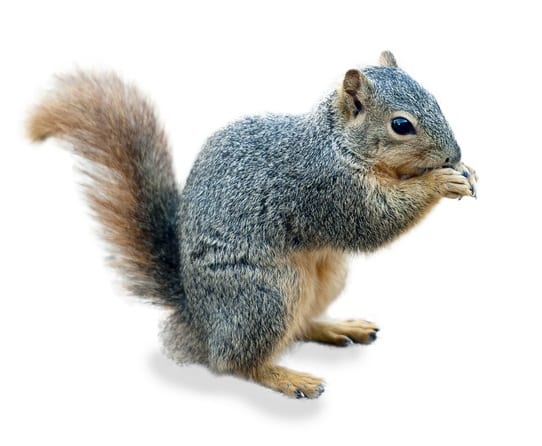
Fox Squirrel
These squirrels grow to about 26 inches, including their tail. They like to live in deciduous forest areas where they can find their favorite foods. They live off acorns, walnuts, pecans, and hickory nuts. Like other squirrels, they will store nuts for the winter months. Though they are not native, they can out-compete the other native squirrels in Oklahoma. This is putting pressure on the other native species to survive.
These squirrels usually follow the color scheme of a grayish-brown body with orange hair on their bellies. They are fantastic jumpers with lengths of about 15 feet horizontally. This means those birdfeeders high in the air are unsafe from these rodents.
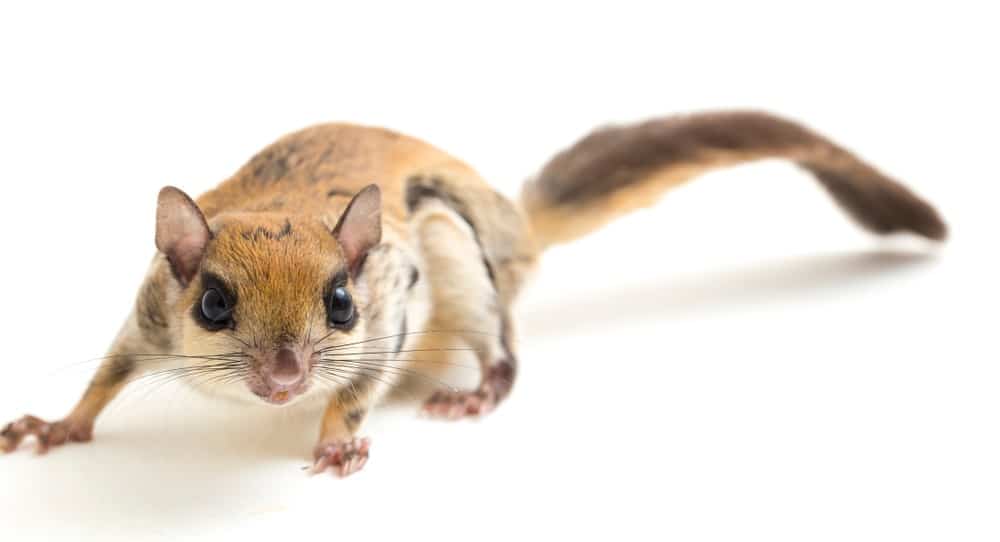
Flying Squirrel
The flying squirrel is a marvel if you are lucky enough to see it. They are nocturnal and live on the tops of trees. This makes it extremely rare to see them in person. They grow to about 10.2 inches in length, and they have a flap of skin connecting their wrists to their ankles, allowing them to glide. They will jump from trees and glide to the next without ever having to touch the ground.
They are reddish-brown to gray and have large black eyes that take up much of their face. They have a lifespan of about two years due to predators like owls, snakes, hawks, foxes, house cats, raccoons, and bobcats. They will make late-night visits to birdfeeders to eat seeds and nuts.
Not Sure What Type of Rodent You Have?
Give us a call! One of our certified technicians can identify your mice or rats and provide a free estimate.
At Emtec Pest Control, we are committed to safe and responsible pest control. We understand that your family’s safety is your number one priority, so we make it our priority, too.
If you have any other questions about any of these pests or pest control for your home or business, contact your Oklahoma pest control experts at Emtec Pest Control by calling us or by filling out our online contact form.


